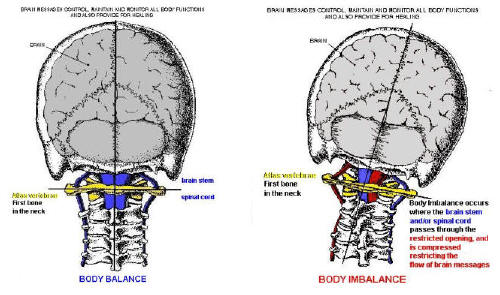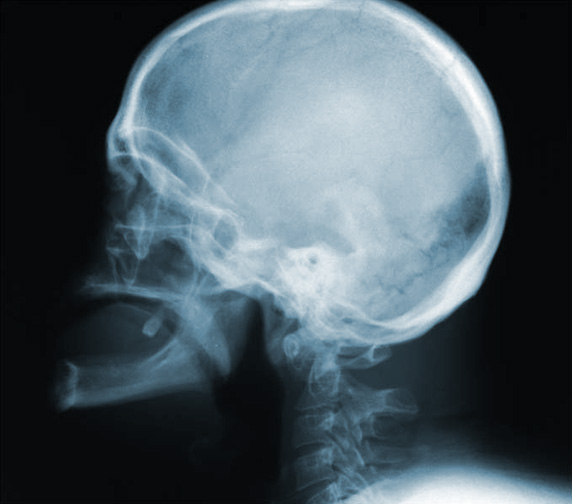Upper Neck Pain, TMJ syndrome and Headaches
Yowza! Have you ever had upper neck pain just beneath your skull that was sore to the touch and attached to a roaring headache? Then you’ve probably experienced an atlas subluxation. Anatomically, the first cervical vertebra (C1) is called the atlas. Atlas in Greek Mythology held the world on his shoulders. Atlas the vertebra holds your world on your shoulders because it supports the skull, which houses your brain, sensory organs, brain stem and other important structures. That makes this vertebra very important indeed.

As the main rotatory vertebra in the cervical spine, the atlas turns on C2 taking the skull and associated structures with it. With an atlas subluxation a number of upper neck pain symptoms can arise, like the inability to turn one’s head completely (in some people it might be experienced as being able to turn the head more in one direction than the other), dizziness, headache, fatigue, insomnia, mood swings, allergies and others. This wide set of symptoms, plus the importance of the atlas in neurological geography and function, makes these subluxations a primary focus of some chiropractic doctors. In fact, some chiropractic techniques are dedicated solely to correcting the atlas subluxation.

Headaches can also be caused by occipital subluxations. The occiput is the set ofcranial bones sitting just atop of the atlas. When the atlanto-occipital joints subluxate, headaches and neck pain are the norm.
I once had a young lady come to see me because she was suffering from severe headaches and insomnia. I asked had she ever been involved in an automobile accident. She said yes, but that “it wasn’t really all that bad.”
When I asked what happened, she replied, “Oh, well I went off an embankment and rolled my truck three times.”
“And that’s not that bad?” I said.
“Well, I didn’t have to go to the hospital or anything; I walked away from the accident.”
Whoa! We took x-rays and sure enough her right occipital bone was jammed down into her atlas. With a few chiropractic adjustments, her headaches were relieved and she was back to sleeping. But I use this story to emphasize how important it is to get your neck pain and headaches checked out, especially if there has been trauma. In any case, your body won’t let you hold off for too long—it has a way of letting you know that it can’t, and won’t, go on that way much longer.
Finally, the temporomandibular joint (TMJ) can refer pain to the neck. Clenchers, people that grind and clench their teeth, are susceptible to developing TMJ syndrome(TMJ disorder). The nerves going into the jaw also send branches to the upper cervical spine. Therefore, pain in the jaw can eventually become a pain in the neck. For more information on TMJ syndrome, read this article.
-This article was written by Dr. Nick Campos, D.C. of West Hollywood Healing Arts Center


No comments:
Post a Comment